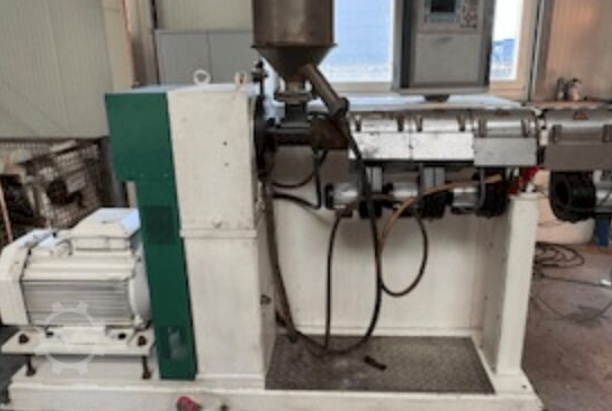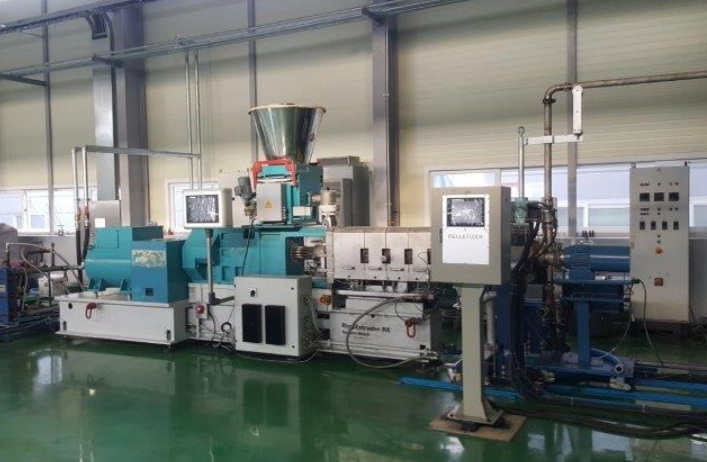Content Menu
● Introduction to Extrusion Blown Film Machinery
>> Process Overview
● Components of Extrusion Blown Film Machinery
● Conclusion
● Frequently Asked Questions
>> 1. What types of films can be produced using extrusion blown film machinery?
>> 2. How does the cooling process affect film quality?
>> 3. What are the advantages of using extrusion blown film machinery over other film production methods?
>> 4. How does the blow-up ratio (BUR) affect film thickness and strength?
>> 5. What are common problems encountered in the extrusion blown film process?
● Citations:
Extrusion blown film machinery is a sophisticated manufacturing process used to produce a wide range of plastic films, primarily for packaging purposes. This machinery involves several key components and steps to transform raw plastic materials into thin, flexible films. In this article, we will delve into the details of how extrusion blown film machinery works, its applications, and the advantages and challenges associated with this technology.

Introduction to Extrusion Blown Film Machinery
Extrusion blown film machinery is designed to convert plastic pellets into continuous films through a series of precise steps. The process begins with the introduction of plastic pellets into an extruder, where they are heated and melted into a homogeneous mass of molten plastic. This molten plastic is then pumped through a circular die, where air is blown into the center to expand the plastic into a bubble or tube shape. The newly formed tube is cooled, typically by passing it through a series of cooling rollers or by applying a stream of air, which solidifies the plastic and ensures it retains the desired thickness and properties.
Process Overview
1. Material Preparation: Plastic pellets are fed into the extruder.
2. Extrusion: Molten plastic is pumped through a circular die.
3. Inflation: Air is blown into the die to form a bubble.
4. Cooling: The bubble is cooled to solidify the plastic.
5. Collapsing: The cooled tube is flattened into a lay-flat film.
6. Winding: The film is wound onto rolls for further processing.
Illustration of the Extrusion Blown Film Process:
A[Material Preparation] --> B[Extrusion]
B --> C[Inflation]
C --> D[Cooling]
D --> E[Collapsing]
E --> F[Winding]
Video: Blown Film Extrusion Process
Components of Extrusion Blown Film Machinery
The machinery consists of several critical components:
- Extruder: This is where the plastic pellets are melted and formed into a molten state.
- Die Head: The molten plastic is pumped through this component to form a tube.
- Air Ring: Provides cooling air to stabilize and cool the film bubble.
- Nip Rolls: These are used to collapse the cooled tube into a flat film.
- Winding Unit: The final stage where the film is wound onto rolls.
Extrusion blown film machinery is versatile and can produce a variety of films, including:
- Packaging Films: Used for wrapping products such as food, beverages, and consumer goods.
- Stretch Films: Known for their elasticity and used in pallet wrapping.
- Biodegradable Films: Made from renewable resources for environmentally friendly packaging.
1. Flexibility: Can produce films of various thicknesses and widths.
2. Cost-Effective: Lower melt temperatures reduce energy costs compared to other extrusion methods.
3. Mechanical Properties: Films produced have balanced mechanical properties.
Despite its advantages, extrusion blown film machinery faces several challenges:
1. Thickness Control: Maintaining uniform film thickness can be difficult.
2. Cooling Efficiency: Air cooling is less efficient than water cooling used in other processes.
3. Bubble Stability: Factors like air flow and temperature affect bubble stability.
Video: Troubleshooting in Blown Film Extrusion
Conclusion
Extrusion blown film machinery plays a crucial role in the production of plastic films for packaging and other applications. Understanding its components, process, and challenges is essential for optimizing production efficiency and quality. As technology advances, innovations in machinery design and material science continue to improve the performance and sustainability of extrusion blown film machinery.

Frequently Asked Questions
1. What types of films can be produced using extrusion blown film machinery?
Extrusion blown film machinery can produce a wide range of films, including HDPE, LDPE, LLDPE, biodegradable films, and films made from recycled materials.
2. How does the cooling process affect film quality?
The cooling process is crucial for film quality. Efficient cooling ensures uniform thickness and prevents defects like bubble instability. However, air cooling used in blown film extrusion is generally less efficient than water cooling methods.
3. What are the advantages of using extrusion blown film machinery over other film production methods?
Extrusion blown film machinery offers advantages such as lower melt temperatures, balanced mechanical properties, and the ability to produce films of different shapes and sizes without excessive trimming.
4. How does the blow-up ratio (BUR) affect film thickness and strength?
The blow-up ratio (BUR) significantly affects film thickness and strength. A higher BUR can result in thinner films with improved mechanical properties, but it also requires precise control to avoid defects.
5. What are common problems encountered in the extrusion blown film process?
Common problems include uneven film thickness, bubble instability, and surface defects. These issues can be addressed by adjusting parameters like air flow, temperature, and material quality.
Citations:
[1] https://amcorplastics.com/blown-film-extrusion-process-explained/
[2] https://www.apollo-china.com/industry-news/working-principle-and-workflow-of-extrusion-blow-molding-machine/
[3] https://www.bpf.co.uk/plastipedia/processes/Blown_Film.aspx
[4] https://www.alamy.com/stock-photo/extrusion-film.html
[5] https://www.youtube.com/watch?v=35v86eQS1IA
[6] https://www.lyondellbasell.com/492c4f/globalassets/documents/polymers-technical-literature/blown_film_problems.pdf
[7] https://www.zjchaoxin.com/blog/common-problems-and-solutions-in-the-film-blowing-process
[8] https://www.airring.com.tw/en/faq/index.html
[9] https://fkur.com/en/knowledgebase/blown-film-extrusion/
[10] https://eupegypt.com/blog/blown-film-extrusion/
[11] https://yxfilmblowingmachine.com/faqlist/extrusion-blown-film-machines.html
[12] https://www.polystarco.com/blog-detail/frequently-asked-questions-about-blown-film-machines/
[13] https://www.chyiyang.com/guide-to-blown-film-extrusion-machines
[14] https://dallasplastics.com/blog/blown-film-extrusion-manufacturing-process/
[15] https://www.meper-blowmolding.com/working-principle-of-blow-molding-machine/
[16] https://www.yjing-extrusion.com/what-is-film-extrusion-equipment-and-how-does-it-work.html
[17] https://www.istockphoto.com/photos/film-extrusion
[18] https://www.dreamstime.com/photos-images/film-extrusion.html
[19] https://www.shutterstock.com/search/blown-film-machine
[20] https://www.barbiergroup.com/en/questions-answers/
[21] https://polyfill.com.vn/5-common-problems-in-blown-film-and-how-to-fix-them/
[22] https://www.won-plus.com/blog/extrusion-technology-related-questions-and-answers_b40
[23] http://www.industrialextrusionmachinery.com/plastic_extrusion_blown_film_extrusion.html
[24] https://www.prm-taiwan.com/blog/guide-to-blown-film-extrusion-machines_412
[25] https://www.swallowmachinery.com/knowledge-base/understanding-the-basics-of-blown-film-manufacturing
[26] https://create.vista.com/photos/extruder-machine/
[27] https://www.youtube.com/watch?v=YSTp0JBobLY
[28] https://www.alamy.com/stock-photo/blown-film-extrusion.html
[29] https://www.youtube.com/watch?v=-0fgnyW9xpM
[30] https://www.youtube.com/watch?v=tYoPQBxsiCw
[31] https://www.youtube.com/watch?v=JMFsX8GPjt0
[32] https://latam.channelpa.com/wp-content/uploads/2021/07/J-Blown-Film-Troubleshooting.pdf
[33] https://www.plastar-machine.com/en/article/the-manufacturing-process-of-blown-film-extrusion.html





















